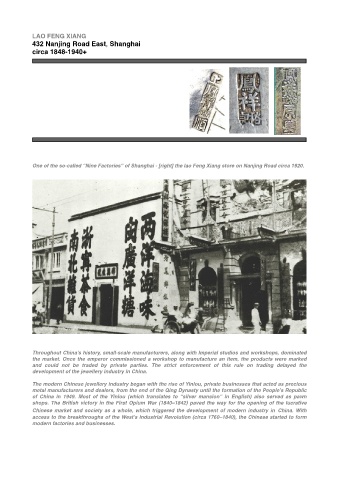Page 459 - Chinese SIlver By Adrien Von Ferscht
P. 459
LAO FENG XIANG
432 Nanjing Road East, Shanghai
circa 1848-1940+
One of the so-called “Nine Factories” of Shanghai - [right] the lao Feng Xiang store on Nanjing Road circa 1920.
Throughout China’s history, small-scale manufacturers, along with Imperial studios and workshops, dominated
the market. Once the emperor commissioned a workshop to manufacture an item, the products were marked
and could not be traded by private parties. The strict enforcement of this rule on trading delayed the
development of the jewellery industry in China.
The modern Chinese jewellery industry began with the rise of Yinlou, private businesses that acted as precious
metal manufacturers and dealers, from the end of the Qing Dynasty until the formation of the People’s Republic
of China in 1949. Most of the Yinlou (which translates to “silver mansion” in English) also served as pawn
shops. The British victory in the First Opium War (1840–1842) paved the way for the opening of the lucrative
Chinese market and society as a whole, which triggered the development of modern industry in China. With
access to the breakthroughs of the West’s Industrial Revolution (circa 1760–1840), the Chinese started to form
modern factories and businesses.

